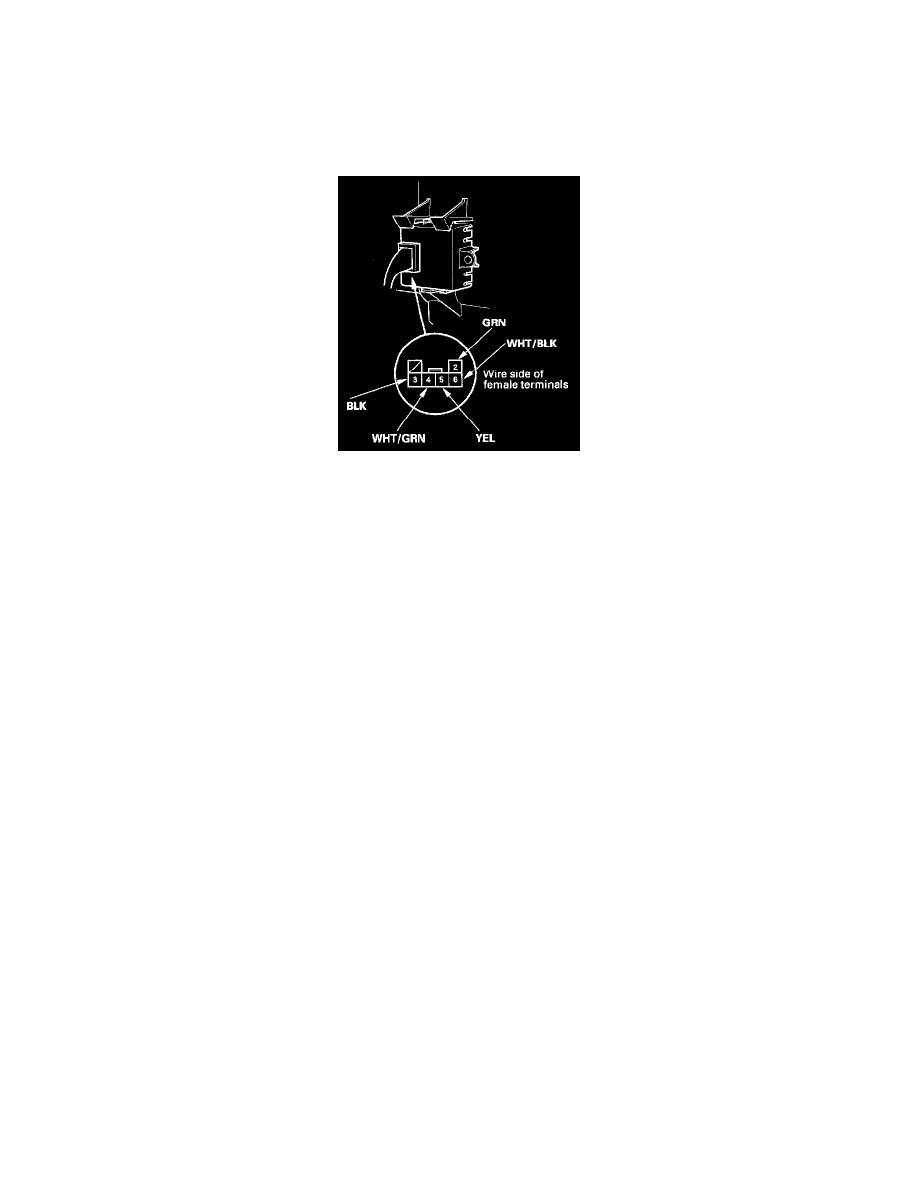Pilot 2WD V6-3.5L (2006)

Lamp Out Sensor: Testing and Inspection
Brake Light Failure Sensor Test
1. First make sure the brake lights come on when the brake pedal is pressed.
-
If all the brake lights come on, go to step 2.
-
If one of the brake lights does not come on, check whether the bulb is blown. If the bulb is blown, replace it and recheck.
-
If none of the brake lights come on, check the brake pedal position switch.
2. Open the tailgate, and remove the right rear side trim panel. The brake light failure sensor is mounted on the back side of the right rear side trim
panel.
3. Make sure the BRAKE LAMP indicator does not come on and stay on when the brake light failure sensor connector is disconnected and the
ignition switch is turned from OFF to engine running.
-
If the indicator comes on, check for:
-
A short to ground in the WHT/GRN wire between the safety indicator and the No.4 terminal of the failure sensors.
-
A faulty safety indicator circuit in the gauge control module.
-
If the BRAKE LAMP indicator does not come on, go to step 4.
4. Check for voltage at the No.5 terminal of the 6P connector with the ignition switch ON (II).
-
If there is battery voltage, go to step 5.
-
If there is no battery voltage, check for an open in the YEL wire.
5. Reconnect the 6P connector.
6. Make sure the BRAKE LAMP indicator comes on and goes off when the No. 3 terminal of the 6P connector is grounded, the brake pedal is
pressed, and the ignition switch is turned from OFF to ON (II).
-
If the BRAKE LAMP indicator comes on and stays on, substitute a known-good sensor.
-
If the BRAKE LAMP indicator goes off, check for:
-
A poor ground (G652).
-
An open in the BLK wire.
